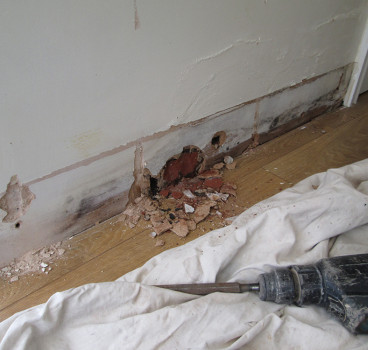FLOORING THAT MAKES THE GRADE FOR INDOOR AIR QUALITY
The European Environment Agency estimates that bad air quality costs €630bn for healthcare and €169bn for lost productivity every year. When you consider that we spend 90% of our time indoors, the importance of specifying a flooring system that takes into account indoor air quality has never been more apparent.
A bad smell inside a manufacturing facility for example can result in the loss of products during production, or in the retail sector, loss of sales. Odours inside a plant could include strong solvents, such as styrene and other highly volatile materials, which if inhaled can seriously affect employee health.
Solvents and other volatile organic compounds (VOCs) can leave a strong smell, some more than others, and the best safeguard against being exposed to them is simply to not have them present at all. Most food manufacturing facilities have prohibited use of any coating systems containing solvents or ones that create hazardous odours.
There are some coatings and surface materials on the market that emit odours while being applied, but become non-taint after they've cured. In these cases, it's important to track the time it takes for the product to set and become non-tainting. It's also important to use only those materials that have been independently lab tested for their non-taint potential.
An important health consideration for floor, walls and ceiling finishes in hospitals and other healthcare facilities is the volume of VOCs that materials emit into the interior environment. Products that meet or exceed standards for low VOC emissions contribute to healthier indoor air quality and reduced impact on patients, staff and the environment.
A hygienic coating solution offering ultra-low emissions and with over 97% reduction in VOCs is Sikagard®-403W. Tough, durable and easy to apply, this water based, low odour wall coating has an A+ rating, according to the French national labelling scheme which is significantly ahead of any Europe-wide requirements. It's a perfect example of the industry providing a solution that can deliver health benefits for both public and private sector buildings.
Building occupants can be exposed to a whole raft of airborne pollutants from chemicals to micro-organisms and particles from endless sources such as carpets, finishes, cleaning products to name but a few. Allowing a supply of fresh air through ventilation and stopping pollutants at source by minimising emissions from materials is a step in the right direction. Make the right choice when it comes to materials and you will have a healthy and productive working environment which will make a difference in the long-term.
Additional Blogs

How construction can cut Its carbon footprint by caring for soil
Soil is often dismissed as mere dirt, but it is one of the planet’s most powerful carbon stores, holding more than all of the world’s forests combined. Yet in our rush to build, pave and develop, we...
Read moreWhat is bridging damp? How it happens and how to fix it
Bridging damp happens when moisture finds a path around the building’s damp-proof course (DPC) so it reaches your internal walls and skirting. If you see damp patches rising above the skirting or...
Read more

The silent death of the fixed-price contract
For decades, the fixed-price contract has been the backbone of construction procurement. It promised certainty with a defined scope, an agreed sum and a clear transfer of risk from client to...
Read more